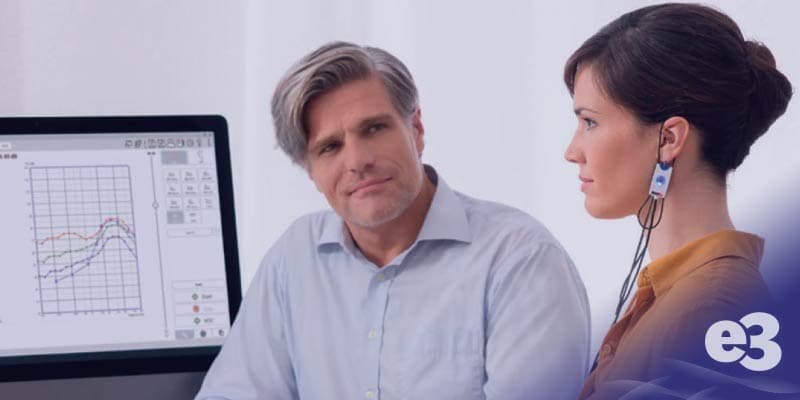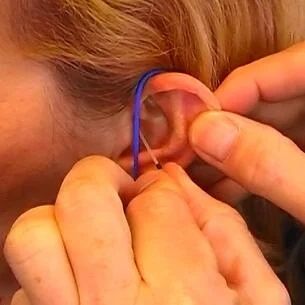Real Ear Measurement Can Make a Real Difference

I have been involved with real ear measurement (REM) since it was first introduced in the late 1980s. Certainly hearing aids and measurement systems have come a long way since then. Today we are seeing many dispensing clinics make real ear measurement the center of the practice. Let me share with you some of the ways that REM can make a real difference in your practice (pun intended).

Like it or not, sales technique is a big part of a dispensing business, and it will become an even more significant part in the very near future as department store and internet sales continue to ramp up. In the world of sales, there are a couple of simple rules that are very helpful to remember. First, in order to sell anything, you must be able to show a NEED. Second, you must be able to demonstrate a BENEFIT from your product. On top of these two fundamental principles, you have to be able to convey your personal enthusiasm for the product/service, overcome the client’s sales objections, inspire confidence and, finally, become a resource for your patient. Think about it. How would you be convinced to move forward with a $6,000+ purchase/investment? REM is the perfect tool to make all of this happen, in an accurate, clear and understandable manner. In selling high tech hearing aids, REM can REALLY make a difference.
So why is it that 60% (or more) of dispensing audiologists still do not use REM? Here are some of the reasons that I hear:
- Some say that REM can’t be used with today’s high-tech digital signal processing hearing aids.
- Others say that it isn’t needed with today’s technology.
Nothing on the planet can be further from the truth. The current REM systems all use REAL speech as a calibrated test signal delivered to the ear at precise soft, average and loud levels. The hearing aid must then process this signal. The result of that processing is what we see as the measurement of the system (the amplified LTASS – long term average speech spectrum) as it compares to the patient’s hearing loss (hopefully it is audible and comfortable). This is exactly what must be done with today’s hearing aid technology, all of which is almost infinitely adjustable (programmable).
Those who say that REM is not needed with today’s technology are still dead wrong. There is sometimes a misunderstanding about this. The fact is that no hearing aid can measure a true REAR (real ear aided response) on its own. Some hearing aids can measure an RECD (real ear to coupler difference) and then simulate a measurement, but this is still not the REAL thing, you are still just guessing about REAL EAR performance and benefit.
REM is needed today more than ever. It is needed from the prospective of sales technique as well as from a fitting prospective. It is the only way to reliably see what is REALLY being delivered to the patient in the REAL EAR in REAL time with the hearing aid/s in place. Everything else, including the manufacturer’s “first fit formula,” is just a good (and many times not-so-good) guess. Of course, you could simply ask the patient how it sounds, but every single study has concluded that they don’t have a clue. They developed that hearing loss very slowly over time. They are used to not hearing consonants and other higher frequency sounds, or hearing them at less than optimal levels.
REM is the only way for you, the audiologist/dispenser, to remain in charge of the sale and the fitting – not the patient and not the hearing aid manufacturer. Successful hearing aid sales and fitting is a combination of art, philosophy and science. You have a fitting/dispensing philosophy (whether you have ever vocalized it and written it down or not) and you have developed an art of dispensing/fitting with experience, and this is necessary and good. REM adds the missing vital component – REAL science.
Every one of our REM users, who has made it a regular part of their practice, would never dispense/fit a hearing instrument without it again. They have come to realize that clearly two thirds of all their previous fittings, using simply the fitting software without measurement, are significantly under fit. Much of speech remains inaudible, and this is unacceptable.
In today’s fitting practice, REM should have six applications:
- Sales (showing a need)
- Demonstration of benefit (“seeing is believing”)
- Fitting/programing (getting it right the first time with confidence)
- Verification (knowing for sure that all of the components of speech are at least audible)
- Counseling (helping the patient and his or her significant other/s see the ways to best make use of their new hearing instrument)
- And, finally, troubleshooting when something goes wrong (seeing the problem/issue firsthand instead of guessing)
